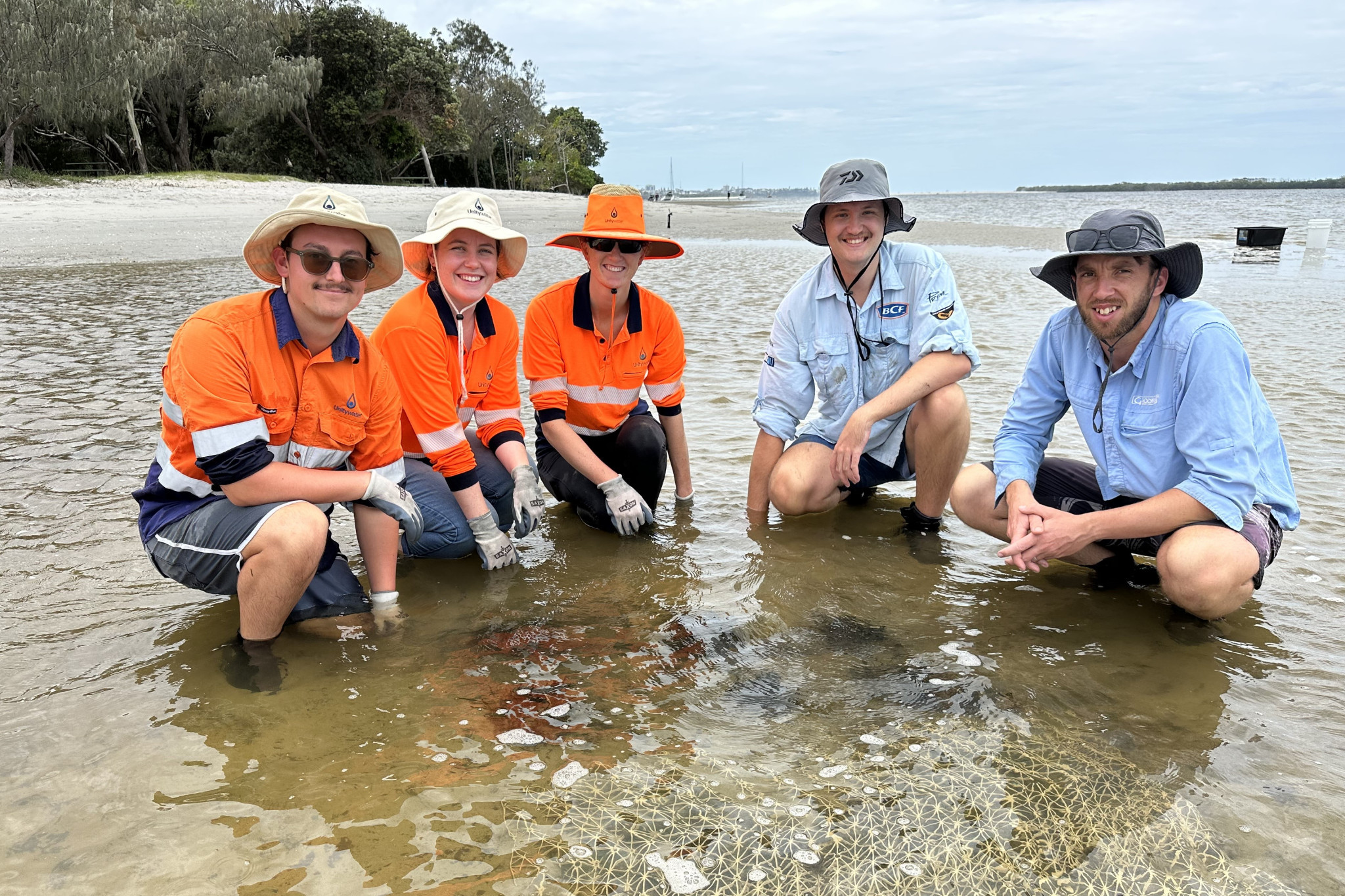News
14 January, 2025
Seagrass solutions
Unitywater has begun planting seagrass across seven sites in Moreton Bay’s Marine Park to determine its effectiveness in reducing nutrient levels that enter the local waterways.

The project aims to find suitable solutions for restoring threatened plant habitats to provide essential food, shelter, and nursery environments for green turtles, fish, and other local fauna, while also measuring the plants' ability to absorb and process nutrients.
Unitywater Executive Manager for Sustainable Infrastructure Solutions, Mike Basterfield, said the project is expected to enhance waterways across the planting locations, contributing to the organisation’s sustainability goal of achieving net zero nutrients to waterways by 2040.
“As we have infrastructure in, underneath, and near marine environments, we have a responsibility to maintain natural habitats and a commitment to enhancing the waterways in our region,” Mr. Basterfield said.
“The trial will measure seagrass' ability to absorb and process nutrients like nitrogen and phosphorus in various marine sites across Moreton Bay, including one in Bells Creek on the Sunshine Coast. The trial follows the success of other nature-based initiatives we’ve implemented, including our Caboolture River Nutrient Offset Project, which has diverted almost 1,900 kilograms of nutrients from waterways to date.”
The project originated from an idea presented by a Unitywater Project Engineer in 2023 as part of an annual ‘Innovation Challenge.’ This initiative invited employees to submit solutions or ideas to positively contribute to waterways across Unitywater’s service region.
Since its inception, the project has been designed and undertaken by the water utility’s ‘Graduate Development Program’ cohort. Participants in the two-year program deliver a ‘Team Innovation Project’ during their tenure.
The initiative is supported by the University of the Sunshine Coast, with research expertise from Dr. Christopher Henderson contributing to its success and providing a foundation for future scientific studies at the university.
“Seagrasses in Moreton Bay are under threat from a range of disturbances, so identifying approaches that can effectively restore the habitat in the region is important for fish habitat and nutrient reduction,” Dr. Henderson said.
The seagrass meadows will be installed at Beachmere, Bells Creek, Toorbul, Scarborough, Caboolture River, Coochin Creek, and southern Bribie Island. All planting is scheduled for completion in the first half of 2025.

